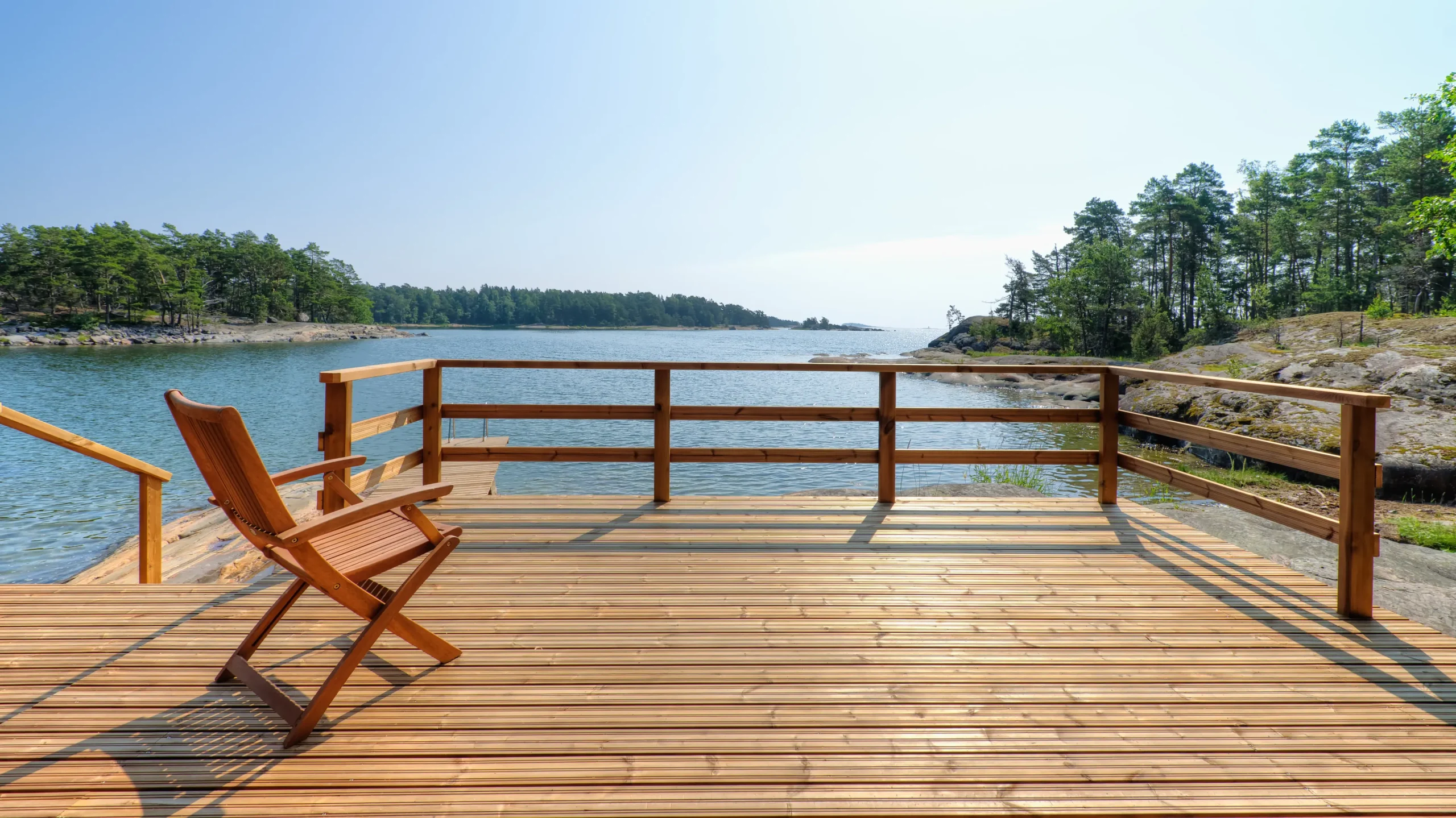It is advisable to service the terrace every 1-2 years to keep it in good condition and easy to maintain. The steps of the terrace handling depend on the baseline. The covered terrace requires less maintenance than the terrace whipped by the weather all year round. The material of the terrace also affects the treatment.
Pressure -impregnated wood and its handling
The new pressure impregnated wood does not require any treatment for the first few years, and due to impregnation, it is unable to receive oil. The surface of pressure impregnated wood may be treated after about five years, but it is case -specific.
Larring structures, on the other hand, are naturally grayed, while other untreated wood surfaces should be protected as soon as the wood is dry. It is a good idea to consider choosing a treatment agent, as moving from one surface treatment to another may be difficult later.
Is it worth painting or oiling the terrace?
There is a lot of strain on wooden horizontal surfaces; Not only do they walk and move chairs, but often they are also at the mercy of the weather. Snow, water, and the sun's UV radiation, on the other hand, pose challenges for surface durability.
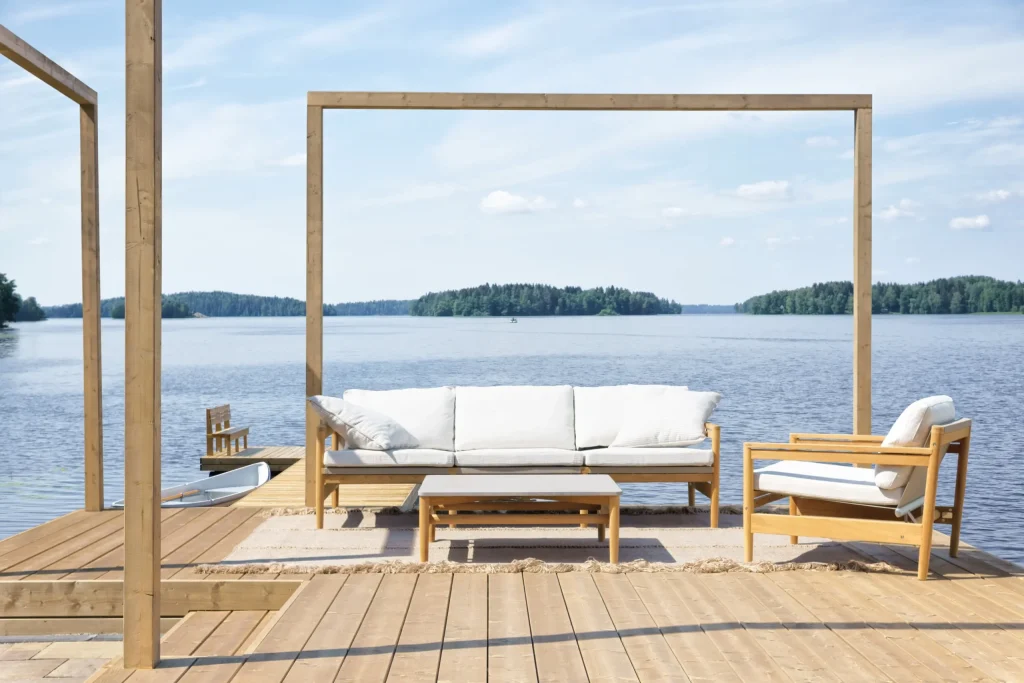
In addition to mechanical exertion, few paints that stand on a horizontal wood surface for a long time lasts a long time. Oil treatment is therefore the most recommended protection for terrace surfaces . The oil is absorbed into the wood and protects the wood from both moisture and dirt. When tinted to oil, the pigment, in turn, protects the surface from the fragile effects of the sun's UV radiation.
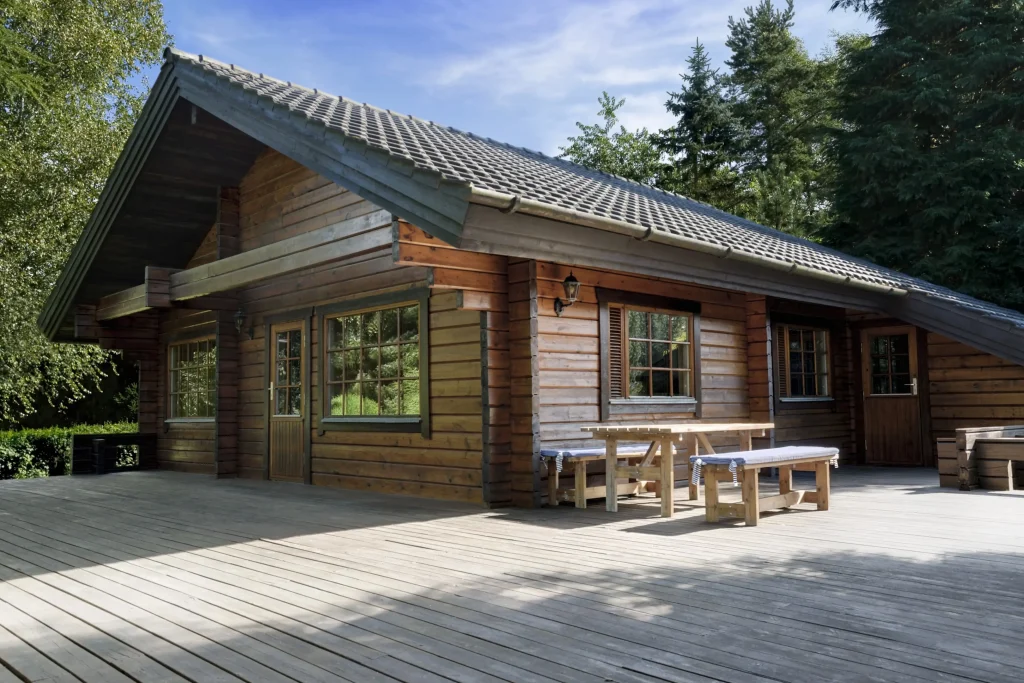
Once covered with paint, the surface must continue to be treated with paint, as tinted oil may not be absorbed evenly, even if the paint layer is removed. Wood oil is absorbed and tinted evenly and beautifully when the surface is untreated or previously treated with oil or other surface or film with a non -formed product.
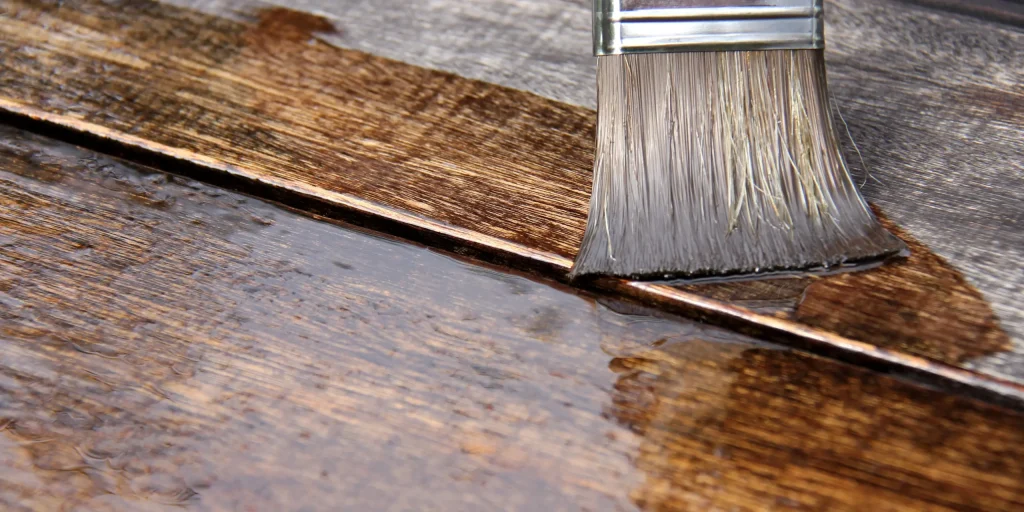
Boiled linseed oil , or Vern, has a durable organic wood protection, which has a long tradition in Finland, for example, in protecting wooden boats. Uula linseed oil -based outdoor oil products and tar -containing Roslag Mahogany are easy to use and safe wood treaters that keep the exterior wood beautiful and durable for a long time.
Harmony and rhythm in the yard with tinted oil
By tinting the treatment material for terrace, exterior furniture, handrails and other exterior wood surfaces, the yard can be postponed, contrast and harmony in the same way as interior decoration.
When choosing a hearing tone, it is good to remember that the final tone is also influenced by the wood surface of the wood surface, and therefore, it is always a good idea to first try tinted oil for a separate but of the same quality piece. The more tinted treatments are made on the surface, the more opaque the result will be.
Uula The tones of the traditional color map correspond to two treatments, which are usually recommended not only for a neat result but also for sufficient protection.
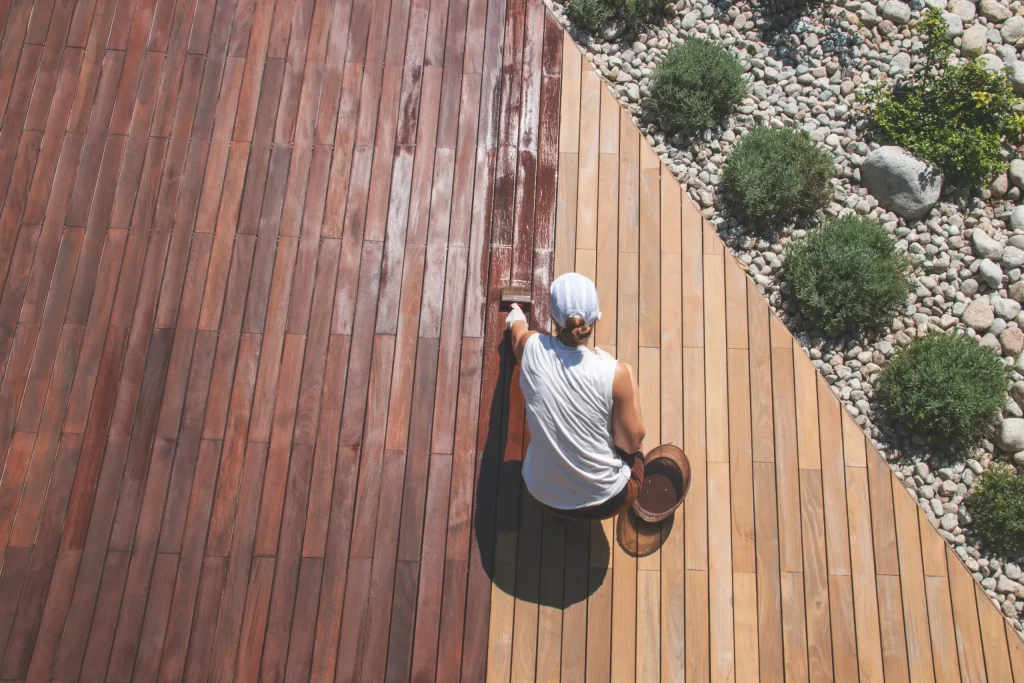
If the surface has been treated many times over the years, and it is no longer desired to cover the treatment, the tinted wood oil can be mixed with non -tinted oil, for example, 1: 1 in a ratio of 1: 1, with the oil covering, but the surface still receives the protection it needs.
Uula outdoor oil is hand -tinted, ie it is tinted with Uula's own hand -tinting pastes made of genuine ground color pigments with excellent color resistance. Exterior oil is only available at Värisilmä stores. Uula Puu Oil, on the other hand, is suitable not only for hand tinting but also for machine tinting, with a wide selection of audible shades to choose from.
Terrace surface treatment step by step
Terrace maintenance is as follows:
- Remove the loose or poorly attached old wooden protection with a steel brush or scraper.
- Grind the grayed or fluffy wood surfaces on a freshly solid surface to ensure adhesion.
- Dry brush off the dust, wash the terrace with Uula mold washing, rinse and allow to dry.
- Brush Uula Wood oil thinly with a brush or paintbrush and allow to dry for 24 hours. If non -absorbable oil remains on the surface, wipe the surface with a lintable cloth before the final drying.
- Do the second treatment at the earliest after 24 hours.
The maintenance of a previously processed surface
Previously oiled terrace maintenance begins by removing all the poorly attached old wooden protection with a steel brush. If the tinted treatment is worn out of the surface or otherwise has been grayed, the surface is sanded for fresh solid wood with a sandpaper or a grinding machine.
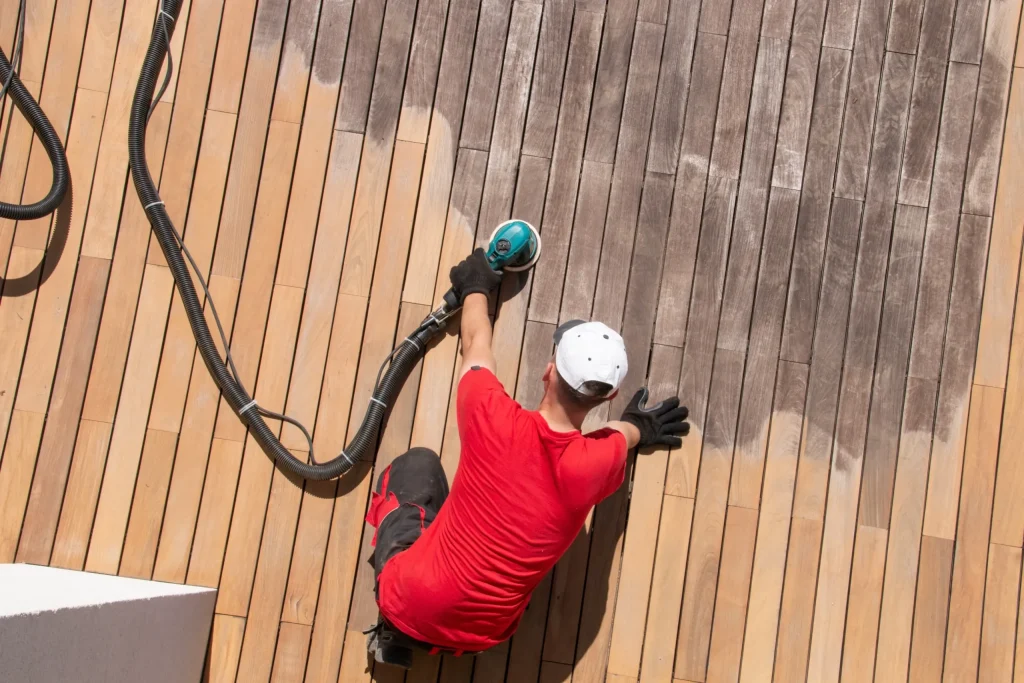
The gray and lint -lined wood surface is not a good platform for surface treatment, as the lint is no longer properly attached to the structure of the wood, but easily removes, carrying the treatment substance with it. After grinding, the surface is carefully cleaned of sanding dust.
Washbasin
It is always advisable to wash the terrace before oiling, so that the oil is adhered to and absorbed evenly, leaving no trash or nasty stains under the oil that bake through treatment or prevent the oil from absorbing.
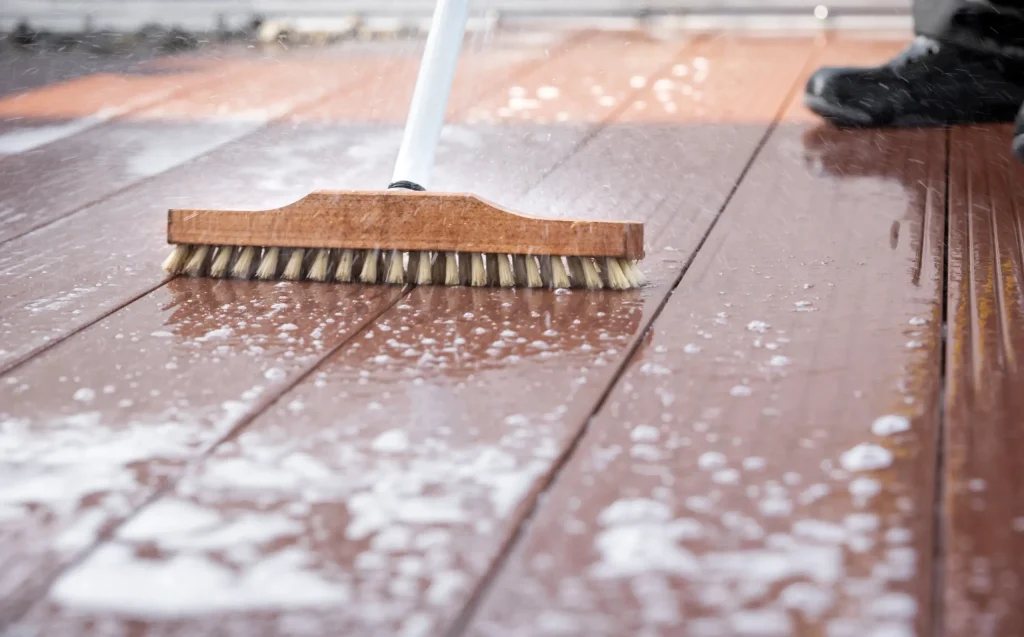
A mere water or a dilute pine sop solution may be sufficient for washing the terrace , but in humid and warm conditions, mold spots or greenish algae growth may be used on the terrace surface, which is a good idea to use biodegradable Uula mold wash. It is suitable for all kinds of naturally dirty and cleaning exterior surfaces, destroying mold and algae spores on the surface.
The brush and a bucket for dilution of the wash solution are sufficient for washing the terrace. Alternatively, the terrace can be washed with a low pressure washer. Uula mold washing is diluted in water on slightly dirty surfaces in a ratio of 1: 2 and for very dirty surfaces 1: 1.
Often, however, even a more dilute mix is sufficient, especially if the purpose is not to oil or paint the surface. Initially, you can dispense mold washing in a ratio of 1:10 and increase detergent if the surface is not cleaned sufficiently. The more dilute mixture is more gentle on wood and the environment.
Read more - washing and oiling the terrace
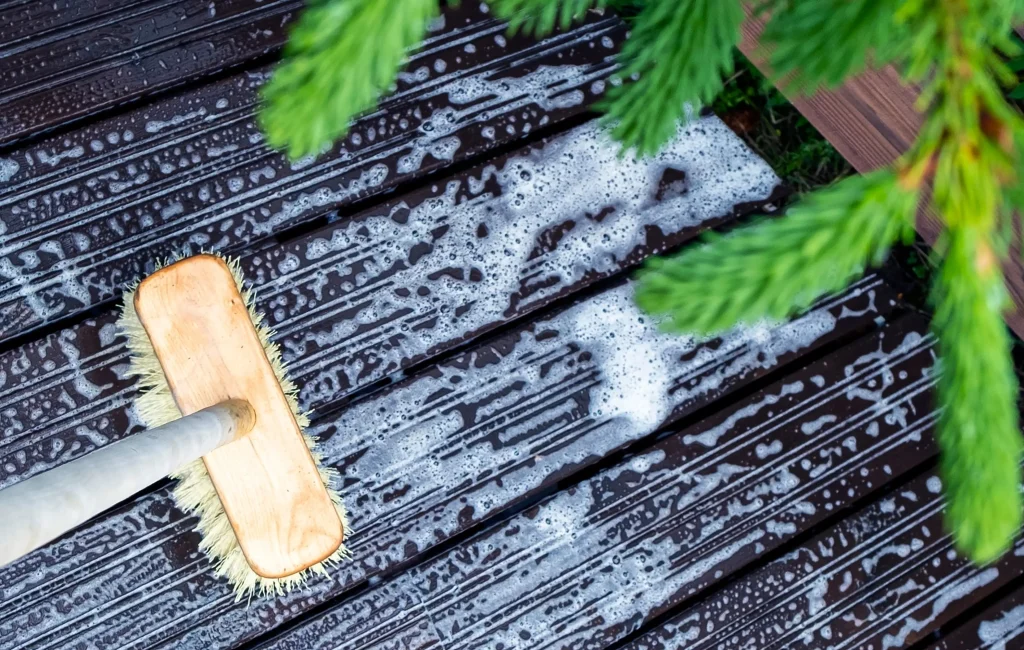
The wash solution is applied to the surface with a laundry cloth, brush, sponge or low pressure washer and left to work for 10 minutes. Brushing according to the causes of wood will help the dirt come off. Finally, the detergent is rinsed off and after washing the surface should be allowed to dry properly.
The terrace is treated with dry semi -cloudy weather
Moisture prevents the oil from being absorbed into the cause of the wood and therefore the terrace must be properly dry before oiling. After the rain, it is a good idea to allow the terrace to dry for a couple of days to ensure absorption.
Also, thorough washing of the terrace can also be watered even deep and after washing it is advisable to reserve enough time to dry. Of course, the sunshine and wind will speed up drying. Technically, the moisture of the wood surface should be less than 15 %, but sufficient drought can be well assessed with your own senses without a separate wood moisture meter.
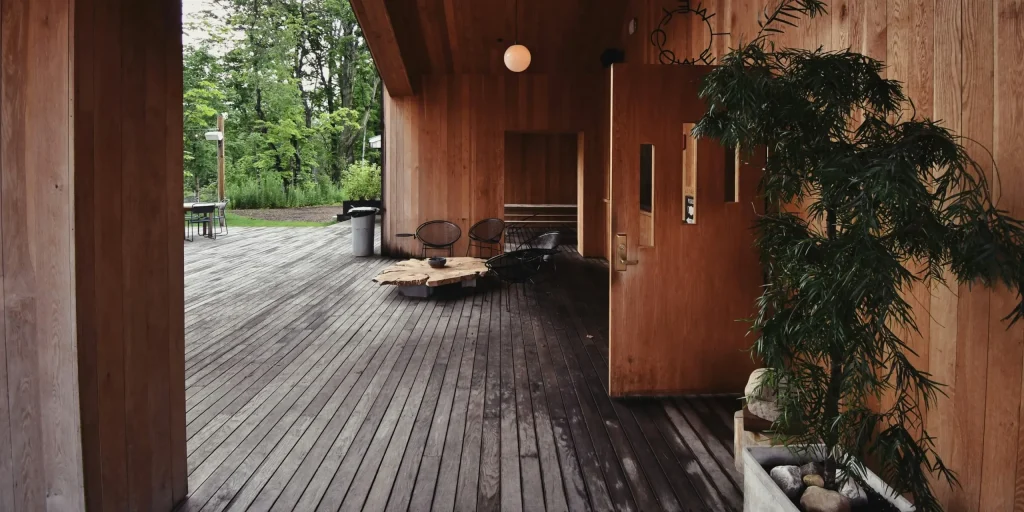
In the early summer, the mornings are relatively dry, while in late summer the moisture of the night will only evaporate from the surfaces during the morning, when it is only worthwhile to start work at noon. Oil is also done well in the evening, as long as the surfaces are dry when you start working. The humidity of the night slows down the drying of the already treated surface, but does not affect the success of the treatment in any other way.
In direct sunlight, the terrace should not be treated, but it is advisable to schedule oiling into a dry but semi -cloud day. The oil that dehydrates too fast may remain uneven and spilled and the oil cannot be absorbed deep enough. The relative humidity of the air should be less than 80% and the temperature at least +10 degrees.
Wood oil is brushed thinly
The wide mixed brush brush is well suited for treating the terrace and the long stem saves your back and knees. Apply thinly to the surface. If there is much more oil on the surface than the wood can be received at once, non -absorbable oil may make the result spilled.
If oil remains on the surface and does not appear to be absorbed, it is advisable to wipe off the excess treatment with a dry lint -free cloth.
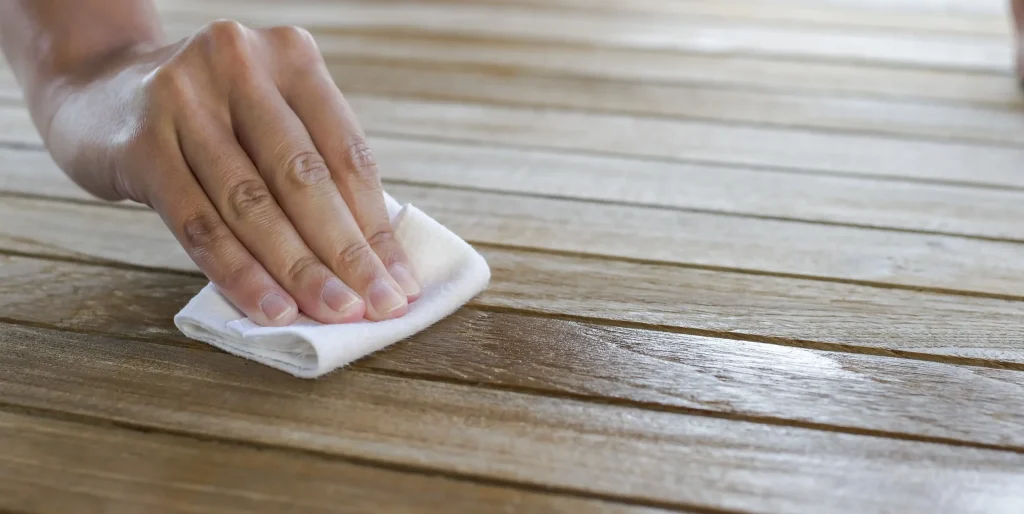
Treat 1-3 boards at a time and brush according to the cause of the tree from end to end, not to forget the boards and the open ends. The board is handled in full to prevent unfortunate seam traces from being created.
Allow the first treatment to dry properly before the next processing. Uula wood oil can be re -treated 24 hours after the first treatment.
Additional tips for the best outcome
These advice should still be considered:
- Mix the oil thoroughly before and during treatment as the pigment quickly sinks into the bottom.
- Part of the cloudy weather is the best for oiling. Do not treat in the rain, in direct sunlight or on the sun -heated surface.
- Also, treat the cross -sectional surfaces of the timber carefully to prevent wood decay.
- The planed surfaces are tight and absorb oil less. The new planed surface should be roughened by grinding before oiling or allowing the surface to be trained 1-2 years before treatment.
